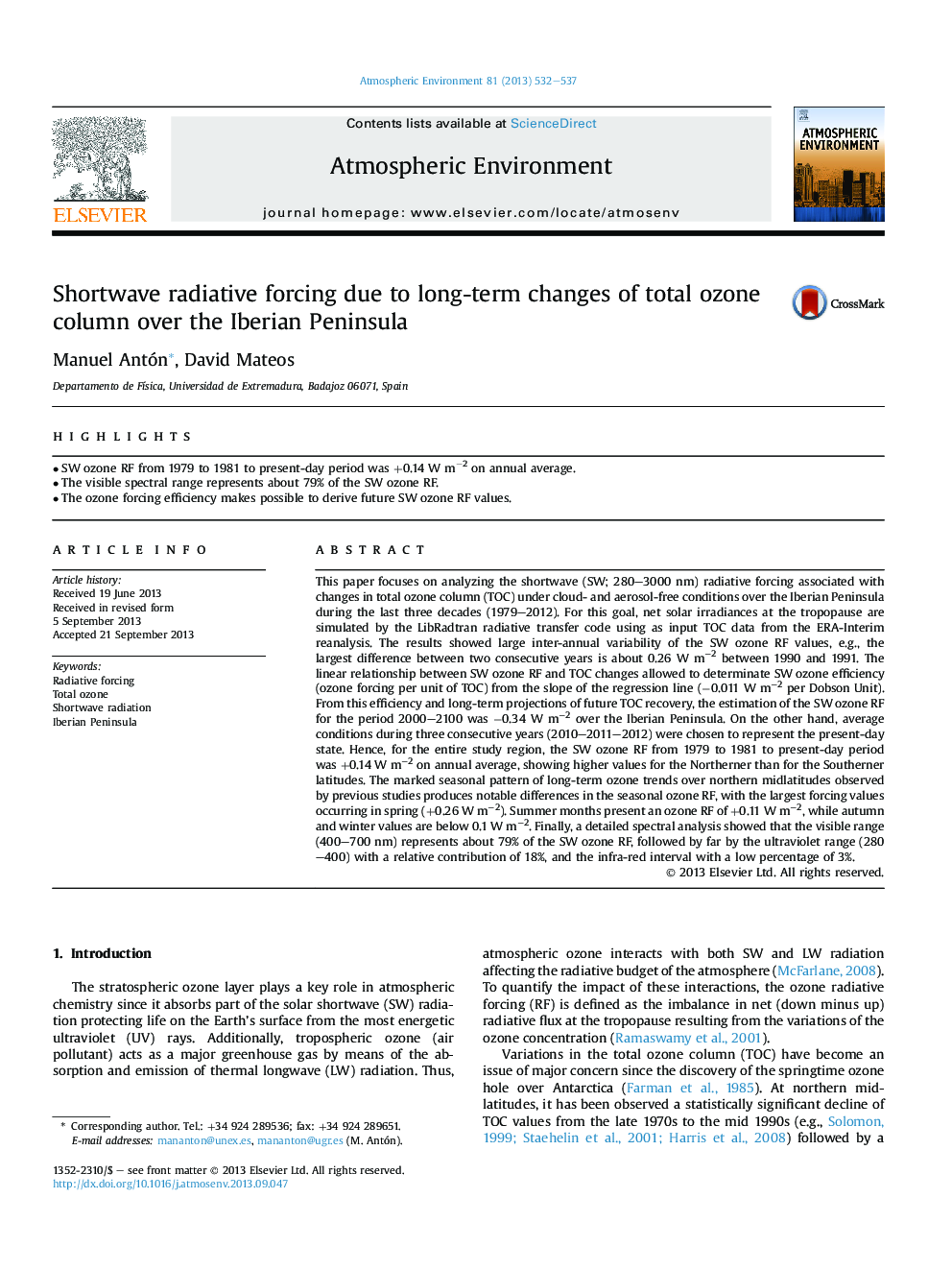| کد مقاله | کد نشریه | سال انتشار | مقاله انگلیسی | نسخه تمام متن |
|---|---|---|---|---|
| 6340520 | 1620390 | 2013 | 6 صفحه PDF | دانلود رایگان |
عنوان انگلیسی مقاله ISI
Shortwave radiative forcing due to long-term changes of total ozone column over the Iberian Peninsula
ترجمه فارسی عنوان
علت تغییرات طولانی مدت کل ستون اوزون در شبه جزیره ایبرین به دلیل تحریک شعاعی کوتاه مدت است
دانلود مقاله + سفارش ترجمه
دانلود مقاله ISI انگلیسی
رایگان برای ایرانیان
کلمات کلیدی
اعمال تابشی، کل اوزون، تابش خورشید، شبه جزیره ایبری،
موضوعات مرتبط
مهندسی و علوم پایه
علوم زمین و سیارات
علم هواشناسی
چکیده انگلیسی
This paper focuses on analyzing the shortwave (SW; 280-3000 nm) radiative forcing associated with changes in total ozone column (TOC) under cloud- and aerosol-free conditions over the Iberian Peninsula during the last three decades (1979-2012). For this goal, net solar irradiances at the tropopause are simulated by the LibRadtran radiative transfer code using as input TOC data from the ERA-Interim reanalysis. The results showed large inter-annual variability of the SW ozone RF values, e.g., the largest difference between two consecutive years is about 0.26 W mâ2 between 1990 and 1991. The linear relationship between SW ozone RF and TOC changes allowed to determinate SW ozone efficiency (ozone forcing per unit of TOC) from the slope of the regression line (â0.011 W mâ2 per Dobson Unit). From this efficiency and long-term projections of future TOC recovery, the estimation of the SW ozone RF for the period 2000-2100 was â0.34 W mâ2 over the Iberian Peninsula. On the other hand, average conditions during three consecutive years (2010-2011-2012) were chosen to represent the present-day state. Hence, for the entire study region, the SW ozone RF from 1979 to 1981 to present-day period was +0.14 W mâ2 on annual average, showing higher values for the Northerner than for the Southerner latitudes. The marked seasonal pattern of long-term ozone trends over northern midlatitudes observed by previous studies produces notable differences in the seasonal ozone RF, with the largest forcing values occurring in spring (+0.26 W mâ2). Summer months present an ozone RF of +0.11 W mâ2, while autumn and winter values are below 0.1 W mâ2. Finally, a detailed spectral analysis showed that the visible range (400-700 nm) represents about 79% of the SW ozone RF, followed by far by the ultraviolet range (280-400) with a relative contribution of 18%, and the infra-red interval with a low percentage of 3%.
ناشر
Database: Elsevier - ScienceDirect (ساینس دایرکت)
Journal: Atmospheric Environment - Volume 81, December 2013, Pages 532-537
Journal: Atmospheric Environment - Volume 81, December 2013, Pages 532-537
نویسندگان
Manuel Antón, David Mateos,
